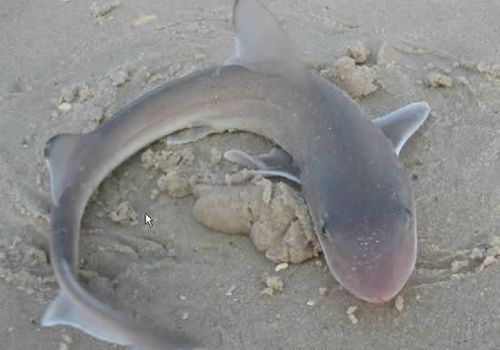
Sand sharks
Carcharias taurusareSand sharks
Introduction: Sand sharks (Carcharias taurusare) are also known as sand tiger sharks or ragged tooth sharks. There are 4 species in 2 genera. Sand sharks are the only known shark to surface for gulps of air that they store air in their stomachs which allows them to float motionless in the water as they hunt for prey.
Sand sharks have a large second dorsal fin and they possess a rudimentary swim bladder - a highly unusual feature in sharks - which enables them to have fine control over their buoyancy compared with other sharks. Their needle-like teeth are long, narrow and very sharp with smooth edges and are highly adapted for impaling fish, their main prey.
These are frequently caught by Namibian anglers, but are generally returned to the ocean as they are considered unpalitable.
Distribution: They are found on both sides of the Atlantic Ocean and off the coast of Namibia and come close to the shore to feed.
Diet: Fish
Colouring: A brown body with dark markings in the upper half
Breeding: Sand sharks develop 2 embryos, 1 in each uterus. The strongest pups eat other embryos and any other unfertilized eggs in a process called 'intrauterine cannibalism' before being born. Females have a gestation period of about 9 to 12 months and become sexually mature when she reaches 2m long.
Size: Adult can reach 3.9m in length and weigh up to 120kg (quite light compared to other sharks). At birth, sand sharks are already 1m long.
Klein Windhoek

